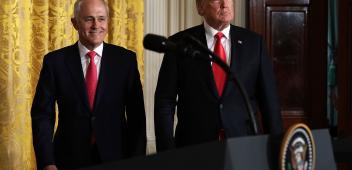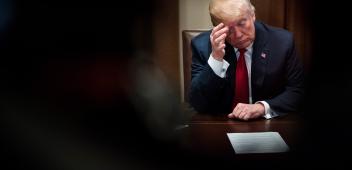Australia's economic centre has shifted from Sydney to Canberra
Originally published in The Canberra Times.

It was 38 years ago that day-to-day management of the Australian economy began shifting from Treasury's Parkes Place building in Canberra to the Reserve Bank's building in Martin Place, Sydney.
As a result of the pandemic, it is starting to shift back.
In the policy struggle over the float of the Australian dollar in 1983, the Reserve Bank of Australia went to war with the Australian Treasury. Before the float, Treasury had substantial control over the setting of the exchange rate. The Reserve Bank had to deploy its weapons of influence over interest rates, the money supply and the foreign exchange market to attain the foreign exchange rate target. Treasury tightened its grip on the central bank with targets for money growth intended to be consistent with both the Australian budget balance and the exchange rate target. Bound hand and foot, the RBA was compelled to execute macroeconomic policies made in Canberra.
Come the float, all that changed. Freed of the need to control the exchange rate, that RBA could use its powerful monetary tools to influence the level of demand and activity in the Australian economy. Over time the RBA evolved an inflation target, which it agreed with the treasurer. But the RBA was free to pursue the inflation target as it judged fit, balancing it against a full employment objective. Treasury and the treasurer retained authority over government spending and revenue, but lost control over interest rates and the Australian dollar - and day-to-day management of the Australian economy.
Big changes in the budget position were still needed in economic downturns, especially the recession of 1990-91, the 2008 global financial crisis, and the COVID-19 pandemic. Otherwise, the aim was to move towards a budget balance.
Dominating day-to-day economic control, and with the concurrent expansion of financial markets, the RBA was able to recruit top-quality graduates. It paid well, is located in a big city, and offered macroeconomists interesting jobs. It also more readily published research, giving its economists opportunities for public recognition and career advancement. Slowly but surely, not only authority but also talent drifted from Treasury to Martin Place. There were plenty of exceptions, and Treasury sometimes recruited from the RBA. The RBA was, after all, a very pyramidal structure, and one with a much narrower range of functions. But for someone interested in macroeconomics - who was also interested in financial markets - the RBA was the place to work.
That configuration is now changing. Even before the pandemic, the RBA had pushed its policy cash rate under 1 per cent. Now it is as close to zero as it can sensibly go, and the RBA has no intention of moving it lower. Easing the strain of deficits required by the pandemic spending, and bearing down on increases in bond rates and the Australian dollar, the RBA has nearly quadrupled its holding of Australian dollar assets, including Australian government bonds. It was a mighty response to the pandemic, but the RBA weaponry is now fully deployed. It will be quite a while before it raises rates, quite a while before it ceases to buy government bonds, and a lot longer before it begins to sell down its bond inventory. If the economy needs additional stimulus over the next four or five years, the RBA will not be able to provide it.
Re-enter Treasury. The vast budget deficits this year and last reminded us of the power of fiscal policy. Meanwhile, the full deployment of the Reserve Bank's arsenal precludes the policy mix used in the decade prior to the pandemic. In that earlier period deficits came down most years, with the contractionary impact on the economy to some extent offset by interest rate cuts. The cash rate was cut from 4.75 per cent in 2011 to 0.75 per cent at the end of 2019. The Australian dollar declined as a consequence, from over $US1 to under US70c. The deficit, meanwhile, was reduced from $54.5 billion in 2009-10 to under $1 billion in 2018-19.
That mix is no longer possible. The Treasurer and Treasury accordingly have to be far more prudent in the speed and extent to which they reduce deficits, particularly once the high household cash balances built up last year and this year are spent. One serious miscalculation and the Treasurer is out of office - and perhaps the Morrison government as well.
The bigger role for Treasury may endure, because it is possible interest rates may be very low for a very long time. In a remarkable but little-noticed speech last year, Treasury secretary Steven Kennedy raised just this possibility. If it proves to be so, then as Kennedy speculated the bar for changes in the fiscal mix, in the balance of tax and spending, may have to be lower. The mix of spending and revenue may need to be changed more quickly and more often. The annual budget pageant, to be presented again next month, may give way to more frequent mini-budgets and fiscal statements, putting Treasury back in the driving seat of day-to-day economic management. Power is returning to Parkes Place, and grave responsibility along with it.
- Dr Edwards is a senior fellow at the Lowy Institute, an adjunct professor at the John Curtin Institute of Public Policy, and a former member of the Reserve Bank board. His Penguin/Lowy special Reconstruction will be launched in Canberra tonight.



